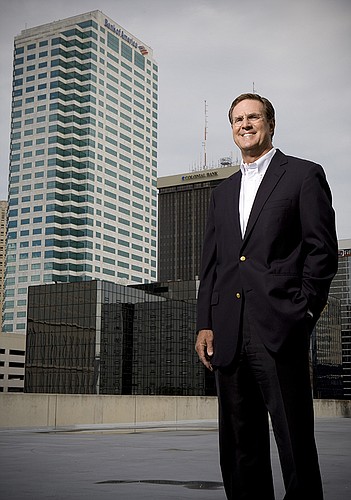Few Gulf Coast industries have undergone as much change -- or expansion — over the past two decades as commercial real estate.
From the growth of the Interstate 4 corridor in Polk and Hillsborough counties as a major distribution hub, to a series of glistening luxury condo towers in Collier County, the region has added millions of square feet and evolved into a mature and captivating market.
New hotels, too — including the 266-room Ritz-Carlton, Sarasota and the pending Wyndham Grand Clearwater Beach Resort, among others — have played and will play a major role in introducing the region to many visitors who ultimately become at least part-time residents.
As a result, no real estate sector has added more — or had a more transformative effect on the market overall — than multifamily housing, despite the boom-and-bust cycles that seem to be part of Florida's economy.
From condominium towers to apartment complexes and senior-living communities, multifamily projects have brought tens of thousands of new residents to the Gulf Coast over the previous two decades, and led to dramatic growth in retail and restaurants, self-storage and even industrial projects.
“Population growth is what makes the world go around in terms of commercial real estate,” says Bruce Erhardt, executive director of the land sales practice at commercial real estate brokerage Cushman & Wakefield, in Tampa.
“And other than during the recession a decade ago, the Gulf Coast has always had positive population and job growth. And perhaps surprisingly, Pasco County has seen the most significant change from its agricultural roots.”
Meanwhile, the past 20 years have also been noteworthy for the rise of master-planned communities such as FishHawk Ranch, in the Lithia section of Hillsborough County, and Lakewood Ranch, which stretches for more than 31,000 acres across Manatee and Sarasota counties. The two communities have integrated residential and commercial space like never before in Florida.
With the influx of new residents, office space has flourished regionwide. The late 1990s, for instance, saw the advent of suburban office projects, especially in the Tampa-Westshore area. More recently, however, that trend has reversed, as a push toward re-urbanization has meant new life for cities and downtowns such as St. Petersburg and Sarasota.
At the same time, the way office space is being utilized has changed dramatically. In 1997, many office workers labored in exclusively private spaces. Today, the growth of so-called collaborative workspaces has meant the demolition of walls and more workers in smaller spaces.
“Collaborative, open and hyper-efficient were words, in regards to office space, that were not even in my vocabulary 20 years ago,” says Lee Arnold, CEO of commercial real estate brokerage firm Colliers International Tampa Bay, Central and Southwest Florida.
Other sectors have also grown up. In 2014, the area also set a mark when Sarasota County became home to the only new, self-enclosed regional mall built in the U.S. that year. The $315 million Mall at University Town Center, a joint venture between Taubman Centers Inc. and Benderson Development Co., concentrated retail space and drew customers from around the region.
To stock many of the region's new stores, massive distribution buildings have sprouted throughout the Gulf Coast. While most have been concentrated along the Interstate 4 corridor between Tampa and Orlando — the area allows logistics firms to ship to more than 18 million people within a 24-hour drive — industrial space has expanded throughout the region.
Most notably, distribution centers are becoming increasingly larger — think Amazon's two 1 million-square-foot facilities in Lakeland and Ruskin and Wal-Mart Stores Inc.'s 2 million-square-foot center in Davenport, in Polk County — and technologically advanced.
Industry analysts maintain the tremendous growth shows no signs of abating, or slowing, in the years ahead.
“What's most remarkable to me is the speed at which things are changing,” says Arnold, who also is executive chairman of Colliers International Florida.
“The whole west coast of Florida is on a 25-year roll, and going forward we'll likely have the same trajectory,” Erhardt says.
— K.L. McQuaid
20/20 vision
Fueled by massive population growth, key Florida industries have gone through massive transformations in the past two decades
Homebuilding
Health care
Banking
Technology
Tourism






